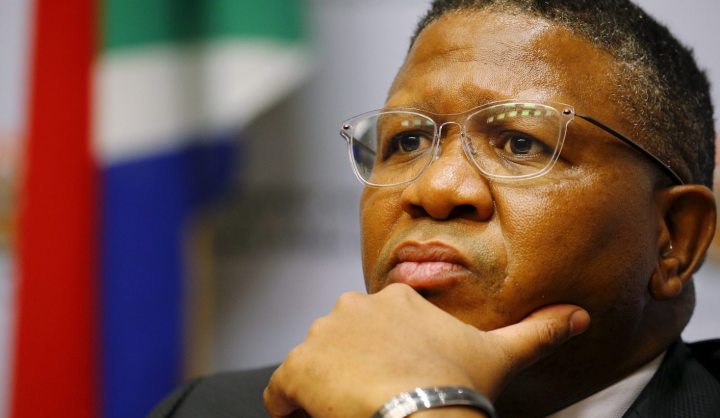South Africa, Sport
Cricket SA’s transformation targets: The good, the bad and how the numbers stack up

Cricket South Africa has confirmed the numbers for transformation targets at national level. Broadly speaking, these targets are already being met, but the decision to implement them officially is curious and absolves those who should shoulder a large part of the responsibility for transformation. By ANTOINETTE MULLER.
On Saturday, Cricket South Africa confirmed the numbers of the official transformation targets it will introduce at national level, effective immediately. The governing body agreed to a minimum of 54% black players and a minimum of 18% black African players “across the season and across all formats”.
The move comes after the Minister of Sport and Recreation, Fikile Mbalula, banned CSA and three of South Africa’s other sporting bodies from “hosting major events” over their failure to transform. Although CSA staunchly denies that these targets were introduced solely to satisfy the minister, it is hard to ignore the coincidence that the hosting of the 2018 World T20 is as good as theirs if they win the minister’s approval.
“That would be an unfortunate analysis of the situation but the coincidence cannot be avoided,” CSA president Chris Nenzani said. “We are not driving transformation in order to host an event. That event is going to come and go, as many events before it. We are driving transformation because we believe it is the right thing to do. We have to talk about transformation, whether or not there is 2018.”
CSA already has had strict targets for franchises and semi-pro teams at domestic level for the last three seasons. While the governing body has always maintained that it does not want to reintroduce targets at national level, they now feel that the progress is not happening soon enough and it that needs to be forced from the top down.
But perhaps the president doth protest too much. It is incredibly difficult to believe that enforcing these targets at national level is the way CSA wants to operate out of their own free will. Cricket has one of the most robust grassroots development systems in the country and while the transition from school level to franchise and national level remains an issue, the process, which was only initiated in earnest in the early 2000s, is starting to reap its rewards.
This does not mean we should ignore some selection dilemmas which have raised more than a few eyebrows; it’s just that it seems strange that a governing body with an acute understanding of transformation would consider this move “natural progression”.
Over the last two years, two incidents of black African players getting the short end of the selection stick spring to mind. First was Aaron Phangiso’s inclusion in the 2015 World Cup squad. The spinner travelled with the side to India and did not play a single match, not even against much weaker opposition on a turning track. Then there was Khaya Zondo during South Africa’s tour to India last year. When JP Duminy was injured on the tour, Dean Elgar was flown over to replace him despite Zondo being in the squad. Elgar played ahead of Zondo in the final ODI and a group of black cricketers subsequently wrote to CSA to raise their concerns.
The introduction of targets could perhaps help eliminate these issues, but forcing transformation from the top down carries the risk of fostering and even encouraging complacency. Far more pertinently, it absolves Mbalula and his ilk of any sort of responsibility. The minister’s obsession with numbers at national level is either a convenient scapegoat for the department’s shortcomings or shows a distinct lack of understanding of the process of transformation.
Even with CSA’s robust talent identification programmes, the youngsters who are talent-spotted in disadvantaged areas are often transplanted into former Model C schools because the facilities and resources available there are so much better. In areas like the the Eastern Cape, where cricket has been much loved for centuries, this is especially pertinent.
And it’s not as if nobody is aware of these challenges. Buried deep inside the Eminent Persons Group report, the document that led to the ban by Mbalula, there is a section which scores the available facilities for schools. According to the data, there are 2,580 primary schools currently playing cricket. The percentage of “township schools” participating in cricket is apparently at 44%, most likely due to CSA’s “hub system”.
Alarmingly, the average number of facilities for primary schools sits at 0.04. Considering schools in more affluent suburbs often have more than one cricket field, many schools in disadvantaged areas will have a big fat zero tick in the facilities box. While club cricket is thriving in the townships, it is the school system and the lack of access to resources at those school systems that remain a problem. Building those facilities is not CSA’s mandate. Ignoring this as an integral part of transformation is dangerous.
Fortunately for the governing body, the numbers for these targets are in their favour. While the figures since the start of January 2015 across all formats aren’t that great with just over 40% black and just under 10% black African, the numbers from the start of the current international season are far more encouraging with 59% black representation and almost 15% black African representation.
In domestic limited overs cricket, there are ample talented black and black African players who could make the step-up in the near future, but keeping the numbers up in the Test team will be far more challenging. Managing young fast bowling prodigy Kagiso Rabada will also be integral to the process.
But at the end of the season, CSA will have to ask themselves, “what now”? While targets are admirable in the pursuit of aggressive transformation, it cannot be a long-term solution and somebody will have to stand up to the bullies in suits. DM
Photo: Sports Minister Fikile Mbalula (Reuters Mike Hutchings)

















 Become an Insider
Become an Insider